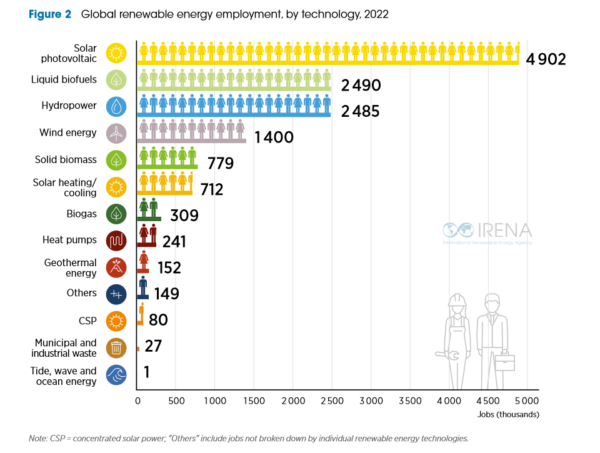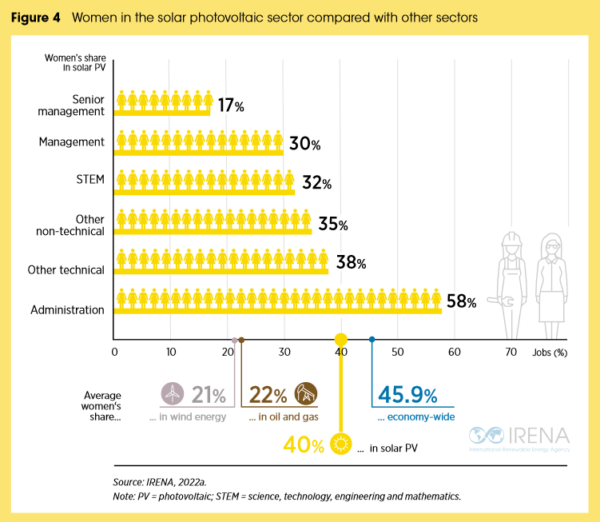- Global solar PV employment sat at 4.9 million in 2022, up from 4.3 million in 2021, according to the recently published Renewable Energy and Jobs Annual Review 2023 by the International Renewable Energy Agency (IRENA).
Among all renewable energy technologies – including hydro, wind and biogas – solar PV was the “fastest-growing” sector and accounted for over one-third of the total renewable energy workforce (13.7) million, the report claimed.

China, home to a majority of the world’s PV manufacturing sector, recorded the most workers with 2.76 million; the also country retained a “commanding position” across the supply chain, from ingots and wafers to cells and modules.
India employed the second largest number of workers, with 281,400 staffers, with on-grid solar estimated to have generated 201,400 jobs and another 80,600 in off-grid settings, the report stated. The US comprised the third-largest solar PV workforce in 2022 with 264,000 employees.
“Increasing solar PV installations in Brazil boosted employment in this industry to 241,000 jobs. Japan added less capacity in 2021 than the previous year. IRENA estimates its workforce at 127,000,” the report stated.
Europe accounted for roughly 11% of the solar PV industry’s total workforce with 540,000 workers in 2022. The report stated that the European Union experienced a “surge” in PV imports in the first half of 2022 due to the Ukraine crisis and subsequent efforts to reduce reliance on oil and gas imports. “However, installation rates trailed due to shortages of inverters and skilled labor, which subsequently slowed imports during the second half of the year,” stated the report.
Female representation in the solar industry was higher than any other renewable energy in 2022, with 40% of the workforce being female – twice as much as in wind, oil and gas sectors, the report claimed. However, women’s participation still falls “somewhat short” of the share of women employed in the overall economy.
Women’s employment in the industry was “uneven”, with females mostly hired for administrative positions (58%) followed by science, technology, engineering, and mathematics (38%) and non-STEM technical positions (35%). Women accounted for only 30% of managerial jobs and only 17% of the total senior management.

More “effective actions” – such as greater awareness, “further” national policies and “better” workplace practices – are needed to ease women’s entry into the industry and improve their career prospects, the report stressed.
Author: Angela Skujins
This article was originally published in pv magazine and is republished with permission.

















